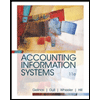
Judgment Case 10–8
Research and development
• LO10–8
Prior to 1974, accepted practice was for companies to either expense or capitalize R&D costs. In 1974, the FASB issued a Standard that requires all research and development costs to be charged to expense when incurred. This was a controversial standard, opposed by many companies who preferred delaying the recognition of these expenses until later years when presumably the expenditures bear fruit. Several research studies have been conducted to determine if the Standard had any impact on the behavior of companies. One interesting finding was that, prior to 1974, companies that expensed R&D costs were significantly larger than those companies that capitalized R&D costs.
Required:
1. Explain the FASB’s logic in deciding to require all companies to expense R&D costs in the period incurred.
2. Identify possible reasons to explain why, prior to 1974, companies that expensed R&D costs were significantly larger than those companies that capitalized R&D costs.
Want to see the full answer?
Check out a sample textbook solution
Chapter 10 Solutions
INT.ACCT. LL W/CONNECT+PROCTORIO PLUS
- Data for the two departments of Gurley Industries for September of the current fiscal year are as follows: Drawing Department Winding Department Work in process, September 1 4,900 units, 20% completed 3,000 units, 65% completed Completed and transferred to next processing department during September 67,100 units 66,000 units Work in process, September 30 3,700 units, 55% completed 4,100 units, 20% completed Production begins in the Drawing Department and finishes in the Winding Department. Question Content Area a. If all direct materials are placed in process at the beginning of production, determine the direct materials and conversion equivalent units of production for September for the Drawing Department. If an amount is zero, enter in "0". Drawing DepartmentDirect Materials and Conversion Equivalent Units of ProductionFor September Line Item Description Whole Units Direct MaterialsEquivalent Units ConversionEquivalent Units Inventory in process,…arrow_forwardThe charges to Work in Process—Assembly Department for a period, together with information concerning production, are as follows. All direct materials are placed in process at the beginning of production. Work in Process-Assembly Department Transaction Debit amount Transaction Credit amount Bal., 3,000 units, 45% completed 6,900 To Finished Goods, 69,000 units ? Direct materials, 71,000 units @ $1.4 99,400 Direct labor 106,400 Factory overhead 41,440 Bal., ? units, 55% completed ? Cost per equivalent units of $1.40 for Direct Materials and $2.10 for Conversion Costs. a. Based on the above data, determine the different costs listed below. Line Item Description Amount 1. Cost of beginning work in process inventory completed this period fill in the blank 1 of 4$ 2. Cost of units transferred to finished goods during the period fill in the blank 2 of 4$ 3. Cost of ending work in process inventory fill in the blank 3 of 4$ 4. Cost per unit of…arrow_forwardHii expert please given correct answer financial accountingarrow_forward
 Accounting Information SystemsFinanceISBN:9781337552127Author:Ulric J. Gelinas, Richard B. Dull, Patrick Wheeler, Mary Callahan HillPublisher:Cengage Learning
Accounting Information SystemsFinanceISBN:9781337552127Author:Ulric J. Gelinas, Richard B. Dull, Patrick Wheeler, Mary Callahan HillPublisher:Cengage Learning AccountingAccountingISBN:9781337272094Author:WARREN, Carl S., Reeve, James M., Duchac, Jonathan E.Publisher:Cengage Learning,
AccountingAccountingISBN:9781337272094Author:WARREN, Carl S., Reeve, James M., Duchac, Jonathan E.Publisher:Cengage Learning,




